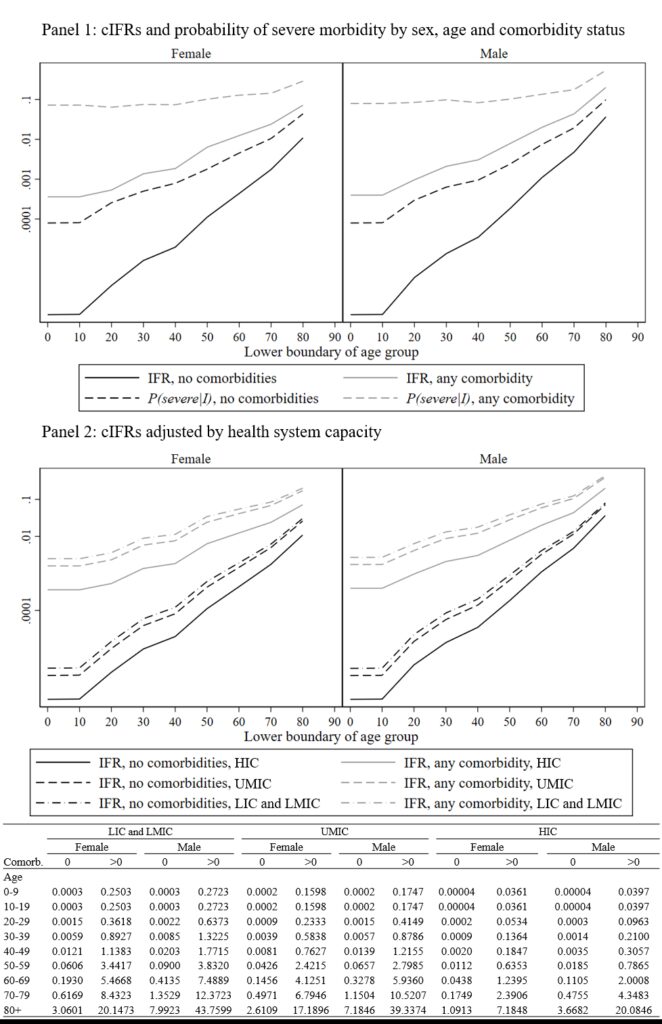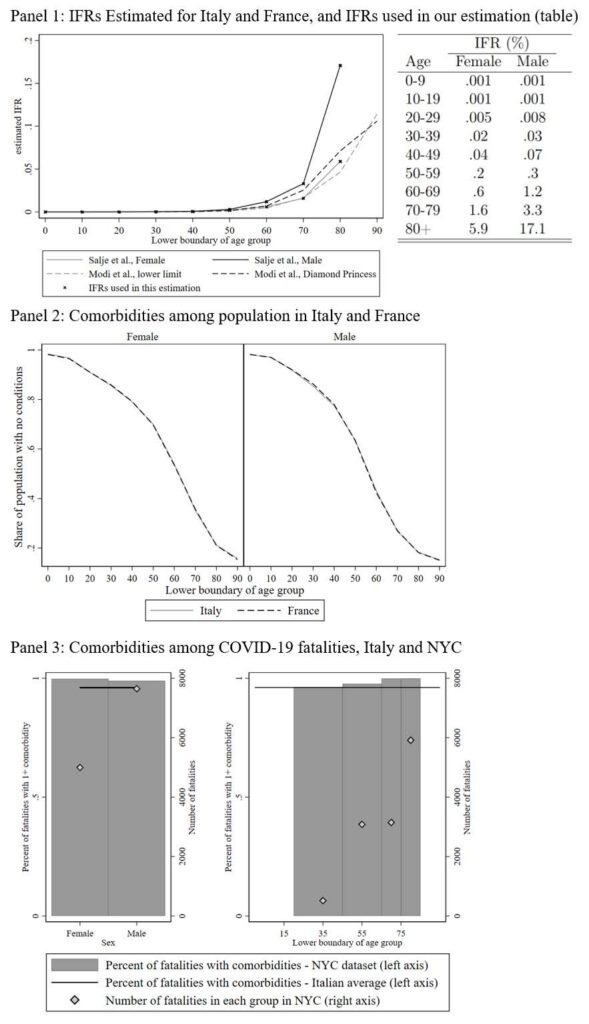Straight2Point commentary
So, usually we do not comment scientific studies we publish. Let us just make a short summary.
According to this study the COVID-19 IFR (infection fatality rate) is extremely low:
| IFR [%] | Chance of dying | |||||||||||||||||||||||||||||||||||||||||||||||||||
|
|
|
And because of this, in low- and middle-income countries, lockdowns could contribute indirectly to over one million additional child deaths.
[s2p]
Conclusion
Our results illustrate the possibility of predicting COVID-19 IFRs with a methodology that (a) uses information readily available for most of the world, (b) relies on parsimonious and transparent assumptions, and (c) appears broadly consistent with the limited set of IFRs generated from random COVID-19 testing. The adjustments by age, comorbidity, and health system capacity all appear important, especially in low income contexts: calculating
IFRs without adjusting for comorbidity would yield estimates on average 13% lower than our benchmark predictions for low income countries, and 75% lower than our predictions if adjusting for neither comorbidity nor health system capacity.
COVID-19 presents policymakers with difficult trade-offs. Many governments in low- and middle-income countries have resorted to severe lockdown measures which impose high costs. Recent estimates suggest COVID-19 mitigation efforts and the reallocation of healthcare resources in the developing world could contribute indirectly to over one million additional child deaths. These unintended consequences must be weighed against the direct toll of an unmitigated pandemic. While our calculations including adjustments for health system strength still suggest slightly lower IFRs in the least developed economies than the in most advanced economies, our estimates are significantly higher than IFRs used in other recent COVID-19 forecasts for Africa [9], [2] and the middle-income world [2]. In the absence of widespread testing or reliable vital registration systems, transparent calculations of likely IFRs provide an important input into optimal policy design under extreme uncertainty, particularly as the pandemic expands into new geographies and/or a second wave of infections arrives.


Source:
Disclaimer
Some of the posts we share are controversial and we do not necessarily agree with them in the whole extend. Sometimes we agree with the content or part of it but we do not agree with the narration or language. Nevertheless we find them somehow interesting, valuable and/or informative or we share them, because we strongly believe in freedom of speech, free press and journalism. We strongly encourage you to have a critical approach to all the content, do your own research and analysis to build your own opinion.
We would be glad to have your feedback.

